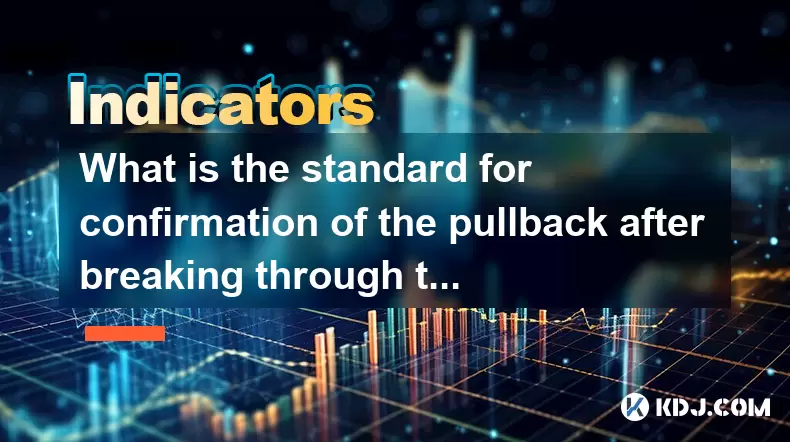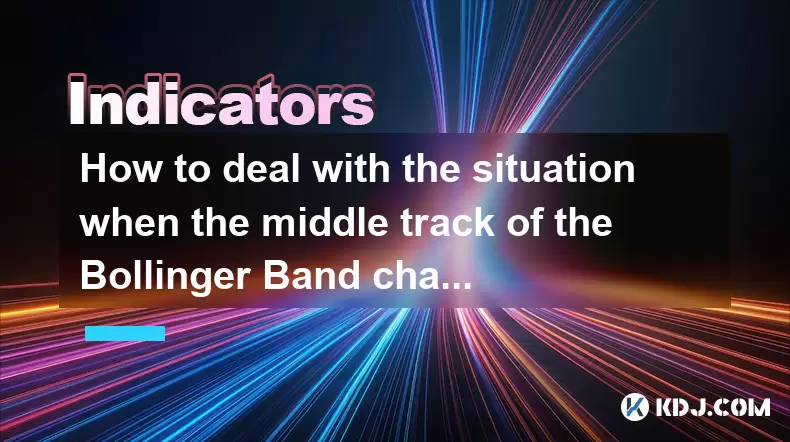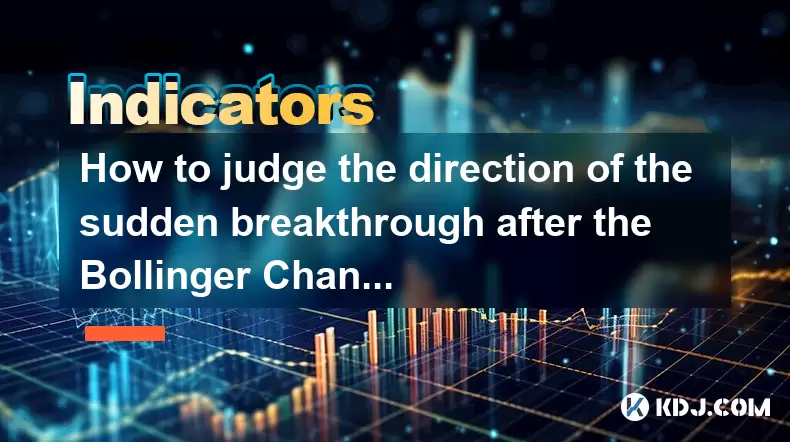-
 Bitcoin
Bitcoin $101,898.5005
-0.75% -
 Ethereum
Ethereum $2,258.1125
-1.07% -
 Tether USDt
Tether USDt $1.0004
0.01% -
 XRP
XRP $2.0178
-2.93% -
 BNB
BNB $624.0243
-1.53% -
 Solana
Solana $134.3298
-0.90% -
 USDC
USDC $0.9999
0.01% -
 TRON
TRON $0.2675
-2.05% -
 Dogecoin
Dogecoin $0.1538
-1.96% -
 Cardano
Cardano $0.5482
-1.11% -
 Hyperliquid
Hyperliquid $35.5636
5.45% -
 Bitcoin Cash
Bitcoin Cash $453.4902
-1.66% -
 Sui
Sui $2.5134
-2.97% -
 UNUS SED LEO
UNUS SED LEO $9.1292
1.77% -
 Chainlink
Chainlink $11.8457
-1.60% -
 Stellar
Stellar $0.2312
-2.73% -
 Avalanche
Avalanche $16.9721
0.29% -
 Toncoin
Toncoin $2.7549
-3.82% -
 Shiba Inu
Shiba Inu $0.0...01081
-1.10% -
 Litecoin
Litecoin $80.8250
-0.71% -
 Hedera
Hedera $0.1374
0.21% -
 Monero
Monero $305.4827
-2.36% -
 Ethena USDe
Ethena USDe $1.0006
0.00% -
 Dai
Dai $1.0000
-0.01% -
 Polkadot
Polkadot $3.2085
-3.12% -
 Bitget Token
Bitget Token $4.0845
-3.13% -
 Uniswap
Uniswap $6.3353
-1.63% -
 Pi
Pi $0.5085
-0.70% -
 Pepe
Pepe $0.0...08913
-3.82% -
 Aave
Aave $232.7090
-0.58%
How to analyze OBV after a large-volume decline? What is the sign of the end of panic selling?
Analyzing OBV after a large-volume decline helps gauge if panic selling in cryptocurrencies is ending; look for OBV stabilization and bullish divergence as key signs.
May 23, 2025 at 06:43 am

Analyzing the On-Balance Volume (OBV) indicator after a large-volume decline is crucial for understanding the health of a cryptocurrency and determining whether panic selling has potentially ended. OBV is a momentum indicator that uses volume flow to predict changes in stock price. Here's a detailed guide on how to analyze OBV in such scenarios and what to look for as signs that panic selling might be over.
Understanding OBV and Its Importance
The On-Balance Volume (OBV) indicator is a technical analysis tool that measures buying and selling pressure by adding volume on up days and subtracting volume on down days. When the OBV line rises, it suggests that the volume is being driven by buying pressure, which is typically a bullish signal. Conversely, a falling OBV line indicates selling pressure and can be a bearish signal.
In the context of a large-volume decline, OBV can help traders understand whether the selling pressure is subsiding or intensifying. This is particularly important in the cryptocurrency market, where large volume swings are common and can lead to panic selling.
Steps to Analyze OBV After a Large-Volume Decline
To analyze OBV after a significant drop in volume, follow these steps:
Obtain the OBV Data: Start by accessing the OBV data for the cryptocurrency you are analyzing. Most trading platforms and charting software provide this indicator.
Identify the Decline: Clearly identify the period of the large-volume decline. Look for a sharp drop in price accompanied by high trading volume.
Observe OBV Trends: After identifying the decline, observe the OBV line. If the OBV line continues to fall after the price drop, it suggests that the selling pressure is still strong. However, if the OBV line starts to flatten or rise, it could indicate that the selling pressure is diminishing.
Compare OBV with Price: Compare the OBV line with the price movement. If the price continues to decline but the OBV line is leveling off or increasing, it might suggest that the downward momentum is weakening.
Check for Divergence: Look for divergence between the price and OBV. Bullish divergence occurs when the price makes a new low, but the OBV line makes a higher low. This can be a sign that the selling pressure is easing and that a reversal might be imminent.
Signs of the End of Panic Selling
Identifying the end of panic selling involves looking for specific patterns and signals in the OBV and other market indicators. Here are some key signs:
Stabilization of OBV: One of the primary signs that panic selling might be ending is when the OBV line stops declining and begins to stabilize. This indicates that the volume of selling is no longer increasing.
OBV Divergence: As mentioned earlier, bullish divergence between the price and OBV can be a strong indicator that panic selling is ending. If the price continues to make lower lows while the OBV makes higher lows, it suggests that the selling pressure is weakening.
Volume Reduction: A significant reduction in trading volume after a period of high volume selling can also be a sign that panic selling is subsiding. Lower volume indicates less selling pressure.
Price Rebound with OBV Confirmation: If the price starts to rebound and the OBV line also rises, it confirms that buying pressure is increasing, which can signal the end of panic selling.
Practical Example of OBV Analysis Post-Decline
Let's consider a hypothetical example to illustrate how to analyze OBV after a large-volume decline:
Scenario: A cryptocurrency experiences a sharp decline from $100 to $80 with unusually high trading volume.
Step 1: Access the OBV data for this cryptocurrency and plot it on a chart.
Step 2: Identify the period of the decline, which is from $100 to $80.
Step 3: Observe the OBV line. Initially, the OBV line falls sharply along with the price, indicating strong selling pressure.
Step 4: After the price drop, the OBV line starts to level off while the price continues to hover around $80. This suggests that the selling pressure might be easing.
Step 5: Look for divergence. The price makes a new low at $78, but the OBV line makes a higher low than its previous low. This bullish divergence indicates that the selling pressure is diminishing.
Step 6: Monitor the volume. If the volume starts to decrease significantly, it further supports the idea that panic selling might be over.
Step 7: Watch for a price rebound. If the price starts to climb back to $85 and the OBV line also rises, it confirms that buying pressure is increasing, signaling the end of panic selling.
Using OBV in Conjunction with Other Indicators
While OBV is a powerful tool, it is often more effective when used in conjunction with other technical indicators. Here are some additional indicators to consider:
Relative Strength Index (RSI): RSI can help identify overbought or oversold conditions. If the RSI is moving out of an oversold condition while the OBV is stabilizing or rising, it can reinforce the signal that panic selling is ending.
Moving Averages: Comparing the price to its moving averages can provide additional context. If the price is rebounding and moving above key moving averages while the OBV is also rising, it can be a strong indication that the selling pressure is diminishing.
Volume Profile: Analyzing the volume profile can help identify key support and resistance levels. If the price is approaching a high-volume area and the OBV is rising, it can suggest that the selling pressure is weakening.
Practical Tips for Traders
For traders looking to use OBV to analyze post-decline scenarios, here are some practical tips:
Stay Patient: Analyzing OBV requires patience. It's important to wait for clear signals before making trading decisions.
Use Multiple Timeframes: Analyzing OBV across different timeframes can provide a more comprehensive view of the market. For instance, if the OBV is showing bullish divergence on both daily and weekly charts, it can be a stronger signal.
Combine with Fundamental Analysis: While technical analysis like OBV is crucial, combining it with fundamental analysis of the cryptocurrency can provide a more holistic view of its potential recovery.
Set Clear Entry and Exit Points: Based on OBV signals, set clear entry and exit points for your trades. For example, if you see bullish divergence and a stabilization of OBV, consider entering a long position with a stop-loss below the recent low.
Frequently Asked Questions
Q: Can OBV be used to predict the exact bottom of a decline?
A: OBV can provide insights into the momentum of buying and selling pressure, but it is not designed to predict exact price bottoms. It can, however, indicate when selling pressure is diminishing, which might suggest that a bottom is near.
Q: How often should I check the OBV after a large-volume decline?
A: It's advisable to check the OBV regularly, at least daily, to monitor any changes in the trend. However, during volatile periods, checking more frequently, such as every few hours, can help you stay on top of rapid market movements.
Q: Are there any specific cryptocurrencies where OBV is more effective?
A: OBV can be applied to any cryptocurrency, but it tends to be more effective in cryptocurrencies with higher liquidity and trading volume, as these assets typically have more reliable data for analysis.
Q: What other indicators should I use in combination with OBV to confirm the end of panic selling?
A: In addition to RSI and moving averages, you can use the MACD (Moving Average Convergence Divergence) to confirm trends. If the MACD line crosses above the signal line while the OBV is rising, it can provide additional confirmation that the selling pressure is easing.
Disclaimer:info@kdj.com
The information provided is not trading advice. kdj.com does not assume any responsibility for any investments made based on the information provided in this article. Cryptocurrencies are highly volatile and it is highly recommended that you invest with caution after thorough research!
If you believe that the content used on this website infringes your copyright, please contact us immediately (info@kdj.com) and we will delete it promptly.
- Cryptocurrencies, Coingecko, and Trending Tokens: What's Hot Now?
- 2025-06-23 23:05:12
- FUNToken: Decoding Past Trends and Getting Started in the Gaming Crypto Sphere
- 2025-06-23 22:25:12
- BTC Price Analysis: Navigating Volatility and the Quest for a New ATH
- 2025-06-23 22:25:12
- Genesis, Bitcoin Mining, and Air-Cooled Miners: A New Era?
- 2025-06-23 22:45:12
- Coinbase's Growth and Resilience: Navigating the Crypto Landscape
- 2025-06-23 22:45:12
- Bitcoin Options Market: Bullish Bets Amidst Geopolitical Jitters
- 2025-06-23 22:51:52
Related knowledge

Is it contradictory that the moving average system is arranged in a bullish pattern but the DMI shows a decline in trend strength?
Jun 23,2025 at 11:43pm
Understanding the Moving Average and DMI RelationshipIn cryptocurrency trading, technical analysis plays a crucial role in identifying potential trends and making informed decisions. Two of the most commonly used indicators are the Moving Average (MA) and the Directional Movement Index (DMI). While both tools aim to provide insight into market direction...

What is the significance of the gap formed by the gap opening not being filled within five days?
Jun 23,2025 at 09:42pm
Understanding Gaps in Cryptocurrency TradingIn the world of cryptocurrency trading, a gap refers to a situation where the price of an asset jumps from one level to another without any trading activity occurring between those two levels. This often happens over weekends or holidays when the market is closed, and significant news or events occur that impa...

What is the standard for confirmation of the pullback after breaking through the neckline with large volume?
Jun 23,2025 at 11:28pm
Understanding the Neckline in Technical AnalysisIn technical analysis, the neckline is a critical support or resistance level that appears in chart patterns such as head and shoulders, double tops, and double bottoms. It typically connects two or more lows (in the case of a head and shoulders top) or highs (in the case of a head and shoulders bottom). W...

How to deal with the situation when the middle track of the Bollinger Band changes from support to resistance?
Jun 23,2025 at 11:22pm
Understanding the Bollinger Band Middle TrackThe Bollinger Band is a widely used technical indicator in cryptocurrency trading. It consists of three lines: the upper band, the lower band, and the middle track, which is typically a 20-period simple moving average (SMA). Traders often rely on the middle track as a dynamic support or resistance level. Howe...

Does the second golden cross of MACD above the zero axis represent the continuation of strength?
Jun 23,2025 at 08:21pm
Understanding the MACD IndicatorThe Moving Average Convergence Divergence (MACD) is a widely used technical analysis tool in cryptocurrency trading. It consists of three main components: the MACD line, the signal line, and the histogram. The MACD line is calculated by subtracting the 26-period Exponential Moving Average (EMA) from the 12-period EMA. The...

How to judge the direction of the sudden breakthrough after the Bollinger Channel narrows to the extreme?
Jun 23,2025 at 11:00pm
Understanding the Bollinger Channel and Its Narrowing PatternThe Bollinger Channel is a widely used technical indicator in cryptocurrency trading, consisting of three bands: the middle band (a simple moving average), and two outer bands that represent standard deviations from the middle line. When the price consolidates for an extended period, the chann...

Is it contradictory that the moving average system is arranged in a bullish pattern but the DMI shows a decline in trend strength?
Jun 23,2025 at 11:43pm
Understanding the Moving Average and DMI RelationshipIn cryptocurrency trading, technical analysis plays a crucial role in identifying potential trends and making informed decisions. Two of the most commonly used indicators are the Moving Average (MA) and the Directional Movement Index (DMI). While both tools aim to provide insight into market direction...

What is the significance of the gap formed by the gap opening not being filled within five days?
Jun 23,2025 at 09:42pm
Understanding Gaps in Cryptocurrency TradingIn the world of cryptocurrency trading, a gap refers to a situation where the price of an asset jumps from one level to another without any trading activity occurring between those two levels. This often happens over weekends or holidays when the market is closed, and significant news or events occur that impa...

What is the standard for confirmation of the pullback after breaking through the neckline with large volume?
Jun 23,2025 at 11:28pm
Understanding the Neckline in Technical AnalysisIn technical analysis, the neckline is a critical support or resistance level that appears in chart patterns such as head and shoulders, double tops, and double bottoms. It typically connects two or more lows (in the case of a head and shoulders top) or highs (in the case of a head and shoulders bottom). W...

How to deal with the situation when the middle track of the Bollinger Band changes from support to resistance?
Jun 23,2025 at 11:22pm
Understanding the Bollinger Band Middle TrackThe Bollinger Band is a widely used technical indicator in cryptocurrency trading. It consists of three lines: the upper band, the lower band, and the middle track, which is typically a 20-period simple moving average (SMA). Traders often rely on the middle track as a dynamic support or resistance level. Howe...

Does the second golden cross of MACD above the zero axis represent the continuation of strength?
Jun 23,2025 at 08:21pm
Understanding the MACD IndicatorThe Moving Average Convergence Divergence (MACD) is a widely used technical analysis tool in cryptocurrency trading. It consists of three main components: the MACD line, the signal line, and the histogram. The MACD line is calculated by subtracting the 26-period Exponential Moving Average (EMA) from the 12-period EMA. The...

How to judge the direction of the sudden breakthrough after the Bollinger Channel narrows to the extreme?
Jun 23,2025 at 11:00pm
Understanding the Bollinger Channel and Its Narrowing PatternThe Bollinger Channel is a widely used technical indicator in cryptocurrency trading, consisting of three bands: the middle band (a simple moving average), and two outer bands that represent standard deviations from the middle line. When the price consolidates for an extended period, the chann...
See all articles
























































































